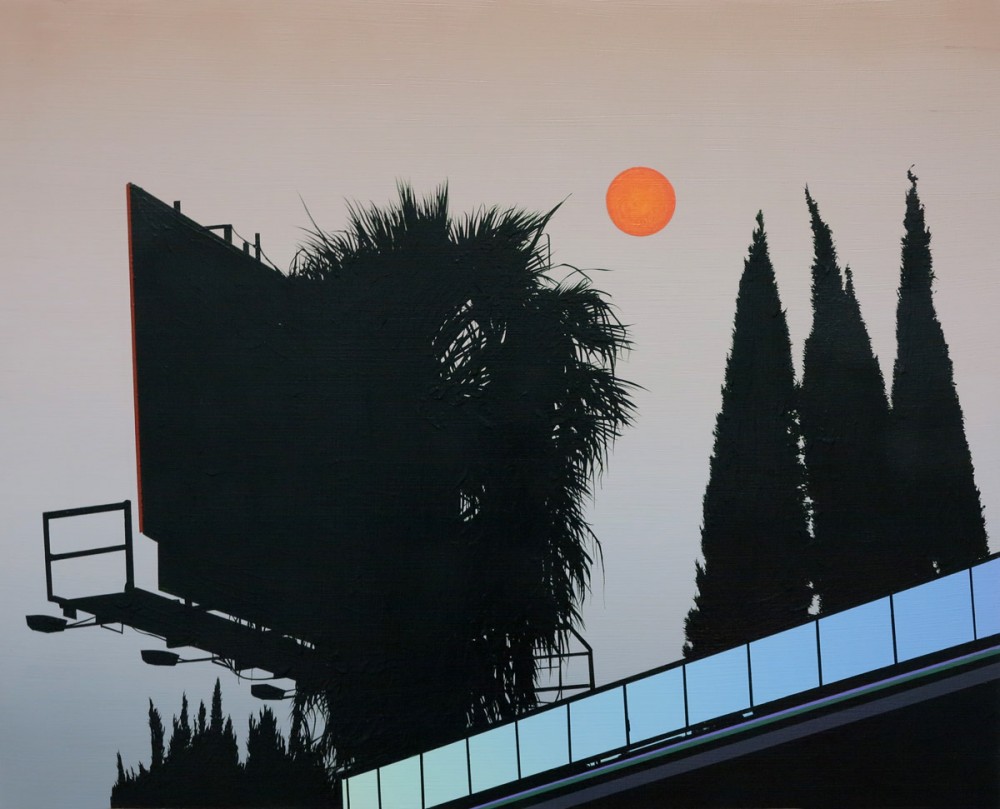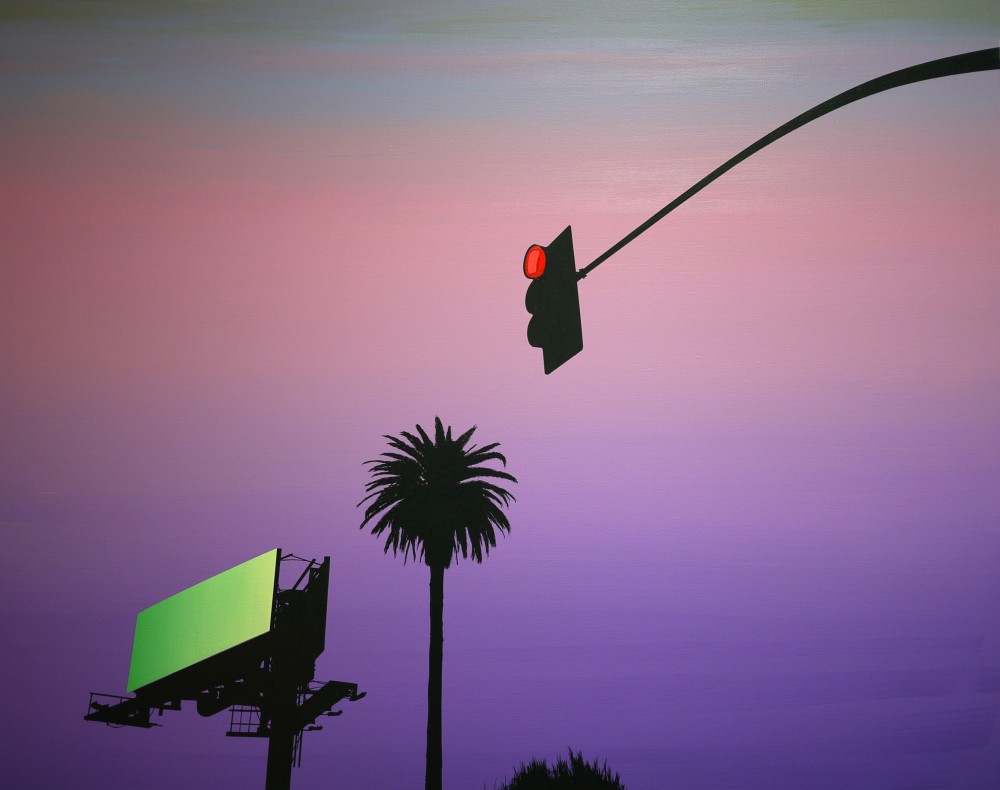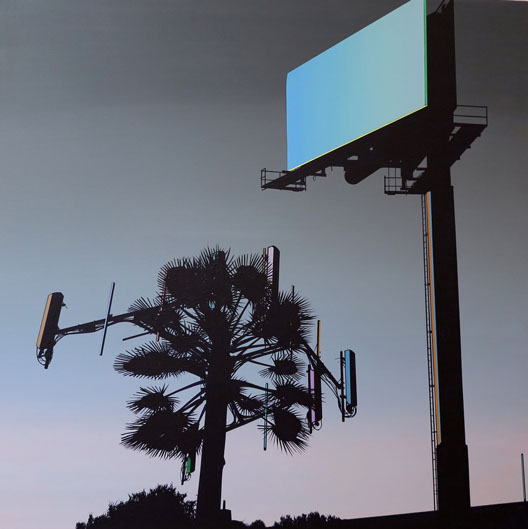During the course of a day, an individual is bombarded with thousands of visual messages mostly in the form of advertisements that are designed to coerce this individual into stopping, looking, and, ultimately, buying (whether it be a product or an idea). Glen Rubsamen’s mixed-media exhibition Polygala, currently on display until December 21st at Robert Miller Gallery, highlights this constant pictorial attack, capturing L.A.’s “jungles,” pastiche landscapes consisting of cellphone towers, palm trees, and billboards. Rubsamen conjoins these disparate entities, translating a new conception of modern reality: the breakdown of the nature/culture dichotomy, the inherent lack of meaning in advertising, and the calming effects advertising has on the modern, conditioned, and passive human mind.

Polygala is a pervasive genus of flowering plants, an appellation Rubsamen employs expertly to describe the mission of advertising, a never-ending force that, when placed next to trees, seems to outpace biological life itself. Ironically though, as inescapable as these advertisements are, Polygala consistently depicts blank billboards, commentary perhaps on the hollow nature of an ad (despite how seemingly evocative it may appear), or an observation of advertisements as white noise, so ubiquitous and constant that their absence causes alarm more than does their presence. While these billboards assume all empty space, they are just light and noise, symbols of modern humankind’s need for constant stimulation, albeit at the expense of measurable character and content.

Rubsamen infuses a verticality into his photographs/paintings, making the viewer feel small, powerless in the face of not only nature, but the cultural world man has created, now turned amok. This is where the idea of a “jungle,” more precisely an “urban jungle,” comes into play. Polygala notes the breakdown of boundaries between nature and culture, simultaneously emphasizing the predatory essence of advertising, and the relative lack of change from natural jungles to the ones human beings have created: there is danger in the cultural inventions of language and contrived images, as threatening as any wild animal or unforgiving environment.

Yet, Rubsamen chooses to wash this entire struggle, shaping, and reshaping in the soft, pastel hues of dusk and dawn. Calmness is achieved. But, there is a passivity as well. We allow and encourage this encroachment of our living space, for meaningless structures, transmitters of vapid messages to commingle and rival natural growth.
The notion of transmission, too, plays a central role in Polygala. The cellphone towers, which stand side-by-side with palm trees (transmitters themselves of biological information), are space-fillers as well, saturating the air with radio waves. In summary, this shrinking of physical space is significant in its ability to render all objects meaningless. This is evident in some of Rubsamen’s photographs/paintings, where palm trees, cellphone towers, and billboards alike are reduced to shadows, darkened shapes that block reality.
Review by Paul Longo

